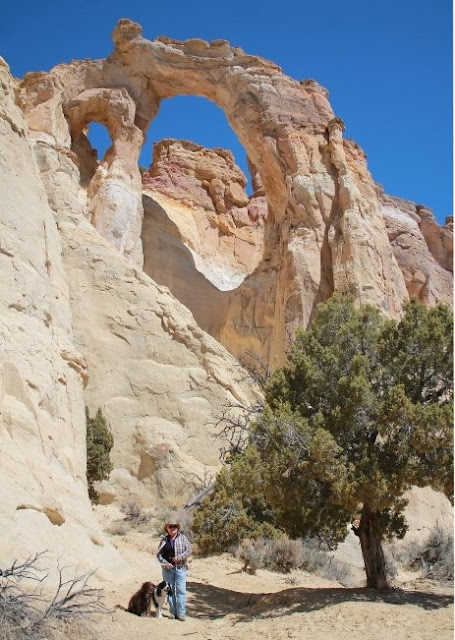Kodachrome Basin State Park, Utah - 24 March 2020
 |
| Dead end at the box canyon. And the swirling winds caused grit to fly into our eyes. Even the dogs were sneezing from it. But there were also amazing things etched from those very same winds. |
Return to Bryce Canyon, Utah - 26 March 2020
 |
| A small pullout to one of the less-visited overlooks. This one demonstrates just how precariously the cliffs drop from the road. |
 |
| The cliff steepness and amount of snow pack had caused several visible mini avalanche slides. Miles of spires, some dusted with snow, while others are gathering sunshine. |
Grosvenor Arch and Willis Creek Slot Canyon, Utah -
30 March 2020
 |
| Watch your distance and footing. There are no railings and one false step will become a 150 fall. But look at the views. |
 |
| From the trailhead to Willis Creek Slot Canyon there is nothing impressive about this hike. But after walking along the creek bed for awhile things start to change. |
 |
| Before descending into the canyon, the creek churns along, crystal clear and noisy, dropping dozens of feet into boulder surrounded pools. Very chilly from snow melt in the nearly by hills. |
Third trip to Bryce Canyon - 31 March 2020
 |
| Our third trip into Bryce Canyon for a hike into the amphitheater. Queens Garden trail is very popular but we were lucky to only have a dozen or so other hikers along the way. |
 |
| Again, watch your footing as you walk along as there are no guardrails and many turns to gradually descend to the valley floor. |
 |
| Some man-made doorways, the only wildlife other than birds and lots of hoodoos and spires at which to marvel. |
 |
| It just does not seem possible for all the variety of rock formations to be present in one location. Every direction shows unique and splendid views with dramatic changes in coloration and light. |
Bleaching up after grocery shopping - 1 April 2020
Last trip to Bryce Canyon - 5 April 2020
 |
| A final look at the Amphitheater. There is no trick photography. It is truly as magnificent as it seems. Stay Safe. Wash your hands. |






















No comments:
Post a Comment